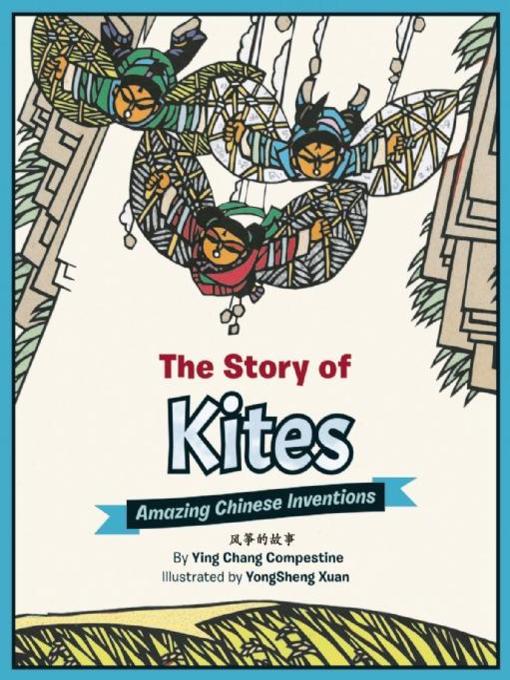
The Story of Kites
Amazing Chinese Inventions
فرمت کتاب
ebook
تاریخ انتشار
2021
Lexile Score
550
Reading Level
2-3
نویسنده
Yongsheng Xuanناشر
Immediumشابک
9781597021319
کتاب های مرتبط
- اطلاعات
- نقد و بررسی
- دیدگاه کاربران
نقد و بررسی

January 1, 2003
Fresh from creating noodles and chopsticks (The Story of Noodles; The Story of Chopsticks), the inventive Kang brothers take to the air in The Story of Kites by Ying Chang Compestine, illus. by YongSheng Xuan. The three boys, weary of chasing birds away from their family's rice fields, experiment with ways to fly and instead come up with one of the most popular inventions of ancient China. Traditional cut-paper art puts the wind in the sails of this charming story, appended with kite-making instructions. .

May 1, 2016
Gr 1-3-Originally published in the early 2000s, these amusing fictional "origin stories" for four ancient Chinese inventions are reissued in a handsome duo-lingual edition. Set against a nondescript "long ago" China, the tales are not meant to be historically accurate. Instead, they are to encourage curiosity about the famous inventions, demonstrating how necessity could have inspired someone to create solutions to daily inconveniences. The three spirited and playful Kang brothers take young readers on four lighthearted journeys, getting into scrapes, finding ingenious ways to get themselves out of trouble, and each time "accidentally inventing" one of the most well-known Chinese cultural objects along the way. The elegantly colorful cut paper-style illustrations are perfect echoes to a Chinese folk art form. Each book features an author's note with an explanation of the title invention's origin and cultural significance, as well as a text-relevant project. The translation team did top-notch work in transforming the stories into highly readable and sophisticated Chinese texts. Since there are no phonetic markings (pinyin) or glossary for the Chinese characters and expressions, the Chinese text is best suited for fluent native readers. An advanced Chinese learner could also handle most of the text but might find it a struggle to look up some of the less familiar phrases.
Copyright 2016 School Library Journal, LLC Used with permission.

























دیدگاه کاربران